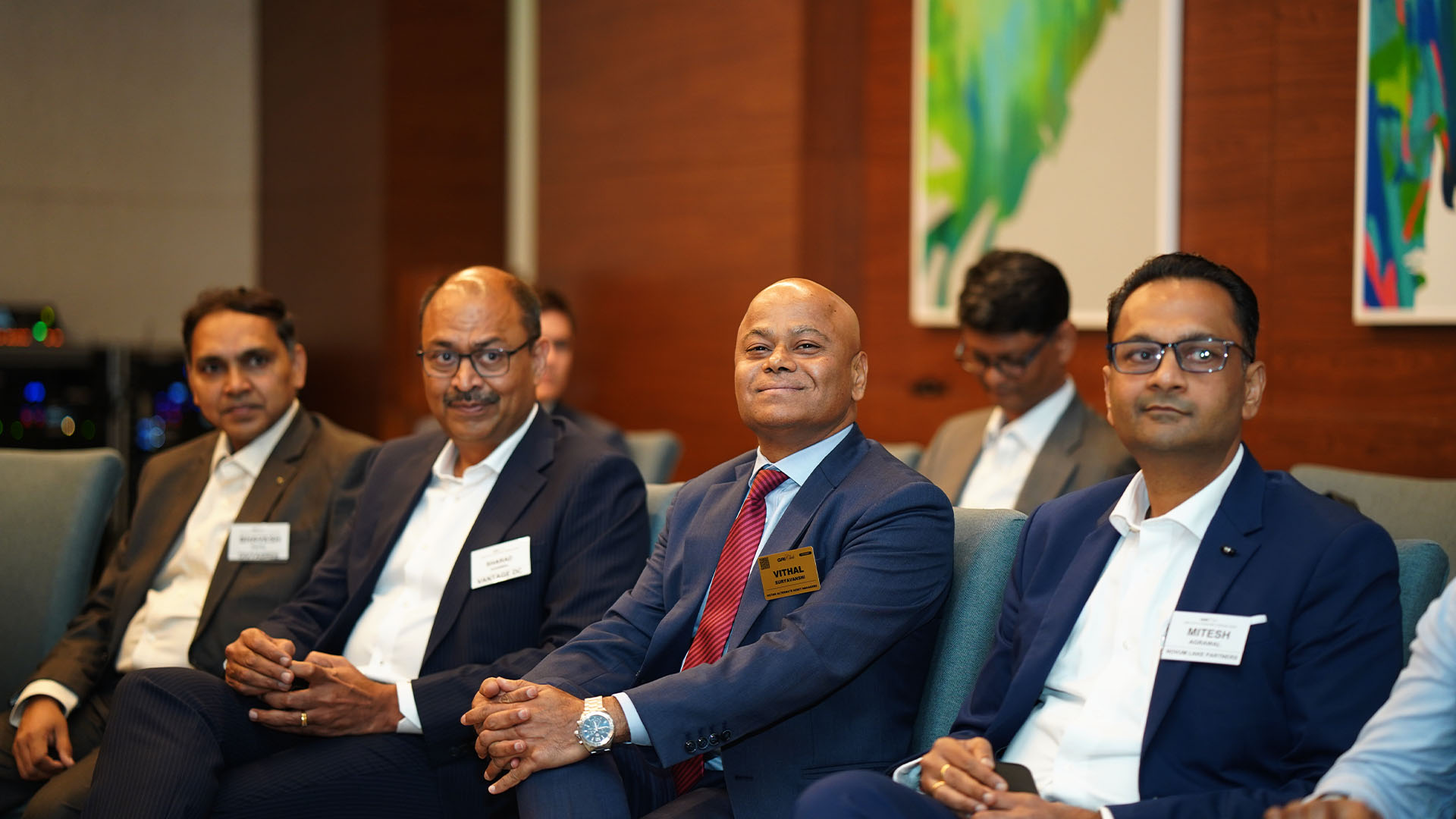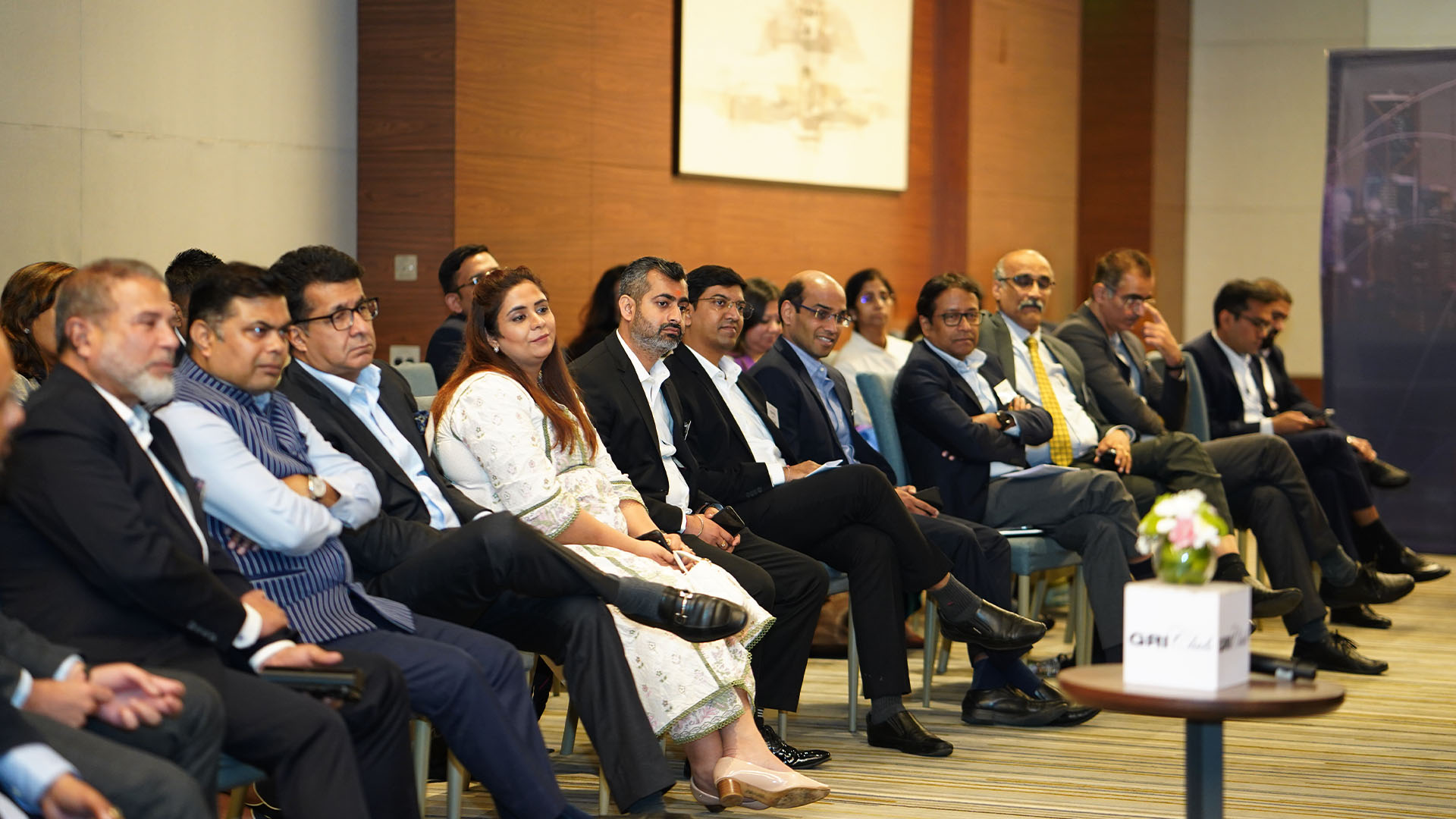
India’s Digital Destiny - GRI Data Centre Forum Insights
Key takeaways from the GRI India Data Centre Forum 2024
The incredible growth of data centres in India was the topic of GRI Club’s Data Centres Forum 2024, where the biggest decision makers active in the sector gathered to discuss the future of this evolving asset class. What follows is an abridged version of our full report detailing the key takeaways from the event, which is available here.
India's economic growth is driving a surge in the demand for data centres, fueled by factors like data localization and cost efficiency. Positioned as a prime destination for this asset class, India leverages its abundant manpower and sustainable power sources.
Over the past decade, India has shown remarkable IT adoption, surpassing even the United States, particularly in sectors like banking. Participants reveal a growing demand, with around 1 gigawatt operational and an additional 1.5 gigawatts under construction.
Despite this positive trend, a notable observation emerges – data centre developers seem overly focused on global giants such as Amazon, Google, and Microsoft, potentially neglecting the vast potential within India's domestic enterprise market.
However, amidst this oversight, there is a shared acknowledgment of a promising future. Parallels were drawn with the continued growth of data centres in China and the US, creating a positive outlook for India's opportunity to follow suit over the next two decades. Forecasts go beyond mere expansion, predicting a transformation marked by new technologies and a surge in data centre construction.
Despite the optimistic phase, a crucial question looms: Is India prepared for the next generation of AI? The industry has shifted from constructing 20 to 30-megawatt facilities to colossal 100 to 300-megawatt data centres. The pace of development is set to increase drastically, posing a challenge for the entire Indian market to adapt and play a significant role in the global AI economy.
The vision extends beyond mere participation; it's about India taking the lead in a 20-year trajectory where AI becomes as indispensable as the internet is today. By 2040, AI is anticipated to permeate every facet of life, with India positioned at the forefront of this transformative wave. Addressing this challenge must be a collective effort, involving all stakeholders in the industry.
Real Estate Investment Insights
 (GRI Club)
(GRI Club)
The discussion began with a fundamental question: are data centres primarily a real estate or a technology business? According to the presented perspective, the answer lies in the seamless fusion of both, emphasising the construction of top-notch data centres that marry real estate excellence with cutting-edge technology.
The current landscape is likened to a gold rush, with a surge in data centre construction as hyperscalers flock to India. However, a cautionary note emerges - customization is paramount. The evolving technology, especially with the improvements in liquid cooling and the increase up to 30 kilowatts per rack due to new AI applications, necessitates specialised buildings.
This paradigm shift prompts a strong appeal to operators, urging developers and investors to embrace innovation and adeptly integrate new technologies to maintain a competitive edge in the industry.
Taking a leap of faith is crucial. Entering the market two years ago, there were doubts about being late to the game. However, developers and investors must seize the imminent opportunities that the next decade holds.
Emphatically, experts encourage the proactive establishment of data centre campuses in every city, stressing that the infrastructure should not merely address current needs, but also anticipate and cater to the escalating demand, much like the strategic development of Special Economic Zones (SEZs) and IT parks.
While a methodical approach is better than an impulsive rush, the resounding message was clear—procure additional land, expedite construction processes, and promptly cater to the pressing needs of an eager customer base.
Investors and developers must embrace change, undertake calculated risks, and strategically allocate funds. The dynamic data centre sector offers enticing prospects, with the advantage of unique long-term contracts spanning 10 to 20 years, promising both short-term gains and enduring returns.
Success now depends on strategically positioning products to cater to entities with substantial financial backing. Developers need to move beyond traditional approaches and embrace the new era of building larger, more advanced infrastructure.
Decoding Data Center Dynamics
 (GRI Club)
(GRI Club)
Navigating the investment and development landscape for data centres requires a keen understanding of historical trends, global market developments, and the impact of evolving technologies.
Exploring the evolution of computing technologies, from mainframes to the era of desktop computing, participants highlighted the role of the semiconductor industry in facilitating the shift towards distributed computing.
Acknowledging the challenges posed by data scattered across individual PCs, experts welcomed the advent of the internet and evolving standards, ushering in a transformative journey. This shift culminated in the prevalent server-client model, relegating servers to the background as data centres took the main stage, with mobile devices assuming the role of clients.
Although the industry has witnessed many significant transformations over the past 25 years, the emergence of hyperscalers in 2014 marked a pivotal shift, challenging traditional data centre models accustomed to serving enterprises, startups, and SMEs.
The present operational design capacity of industrial-level data centres stands at 1 GW, but a substantial surge is anticipated in the next two years, with overall capacity reaching 2.5 GW, highlighting a visible expansion.
The heightened demand finds its roots in the changing landscape of technological interactions across sectors like banking, retail, automotive, and power. This surge is a direct result of the ongoing digital transformation, fostering increased data generation through automation and technological advancements.
While domestic factors are the primary drivers of this growth, the expansion of India's economy and the global digital transformation - with worldwide spending expected to reach almost USD 4 trillion in 2027 - are expected to fuel considerable international demand.
The evolution of the industry, from small-scale ventures in the past to the current capacity additions, indicates a trajectory towards a more substantial data centre presence in India, albeit with unique challenges and considerations.
A critical blind spot identified during the discussion was the need for skilled manpower, robust MEP (Mechanical, Electrical, Plumbing) infrastructure, and an efficient contractor ecosystem. The conversation emphasised the necessity for concerted efforts to develop a skilled workforce and a supportive ecosystem to effectively address these identified gaps.
Addressing the need for adaptability and risk mitigation, the approach advocated involves designing on a macroscale and executing on a micro level. This entails building for maximum capacity while maintaining modularity, allowing for flexibility in catering to diverse clientele.
This proactive approach lays the foundation for modular solutions tailored to the unique demands of end customers, whether for hyperscalers, SaaS providers, banking and financial institutions, enterprises, or Colocation Centres (Colo).
Designing the Future
 (GRI Club)
(GRI Club)
Highlighting the shift from the traditional linear capacity model, the conversation emphasised the necessity for the development of new data centres to focus on operational efficiency, speed, and accommodation of Digital, AI, and Machine Learning (ML) requirements.
Specific details underscored the need for advancements in construction techniques, sustainability, and enhanced network connectivity to meet the demands of emerging technologies.
Choosing data centre locations extends beyond construction, with key considerations including height and weight specifications, the need for special-purpose buildings, the importance of network availability, airport access, and efficient utilisation of India's ample power resources.
Participants also addressed the critical role of enhanced connectivity infrastructure, driven by issues linked to outdated submarine cables and technical aspects distinguishing data centre networks from traditional telecom networks. A stark reality was noted—current submarine cables are becoming obsolete, with an anticipated 20-25% remaining relevant.
Expected to come online in 2025 and with a bandwidth projected to exceed the entire network's data flow, an ambitious project to deploy the most powerful cable to operate in India is currently underway. This, however, might be just the beginning, as India is predicted to require multiple such projects.
At this point, collaboration with telecom operators and governmental policies becomes essential to facilitate the development of robust optical fibre infrastructure. The implementation of more streamlined policies was identified as a key issue when it comes to significantly easing infrastructure development.
Design considerations also took the spotlight, emphasising the significance of flexible and modular approaches. Operators grappled with creating adaptable facilities for diverse clientele needs, incorporating scalable solutions like flexible power distribution systems, cooling techniques, and infrastructure layouts to optimise resource utilisation.
Addressing power issues and cooling technologies, especially with the growing presence of hyperscalers, the suggested approach involved a macro design strategy for overall capacity planning, complemented by micro execution strategies tailored to specific areas or workloads.
As the industry prepares for the surge in demand driven by digital transformation, the collaborative effort of telecom operators, policymakers, and industry leaders is crucial.
Flexibility and adaptability also remain key principles in designing and executing data centre strategies, ensuring they align with the dynamic requirements of the ever-evolving technology market.
The Green Dilemma
A notable observation surfaced during the sessions—markets traditionally influenced by a handful of major customers, suggesting substantial pricing power, are now grappling with the environmental consequences of escalating power consumption.
The central issue revolves around the rapid increase in power consumption by data centres globally, raising concerns amongst governments and the public about environmental sustainability and the challenges posed by global warming.
The persistent influx of data worldwide poses a multifaceted challenge for the industry, seeding doubts about the feasibility of reducing power consumption. A pressing need for a significant transition to renewable power sources is mentioned, suggesting an imminent shift towards more sustainable practices in the industry.
Experts advocated for India's leadership in sustainable development, proposing innovative initiatives such as establishing a substantial fund and collaborating with renowned universities on efforts to reduce power consumption.
The cost of power is another significant aspect, with sustainable power in India being reportedly less expensive than the grid, unlike the U.S. This cost dynamic positions India favourably, potentially securing more capacity as the global industry evolves.
Building on these discussions, the session highlighted the vital role data centres play in energy conservation. When a workload transitions from an on-premise server to the cloud, there's a significant reduction in energy consumption.
This underlines the potential for positive environmental impact through strategic shifts in data management practices.
Read the full report HERE!
To find out more about how this situation develops, don’t miss out on the ‘Redefining Workplaces’ discussion at the upcoming GRI Offices India 2024, taking place in Mumbai on April 16th, where industry experts will gather to answer the question - Can Data Centers and Office Spaces Coexist?




